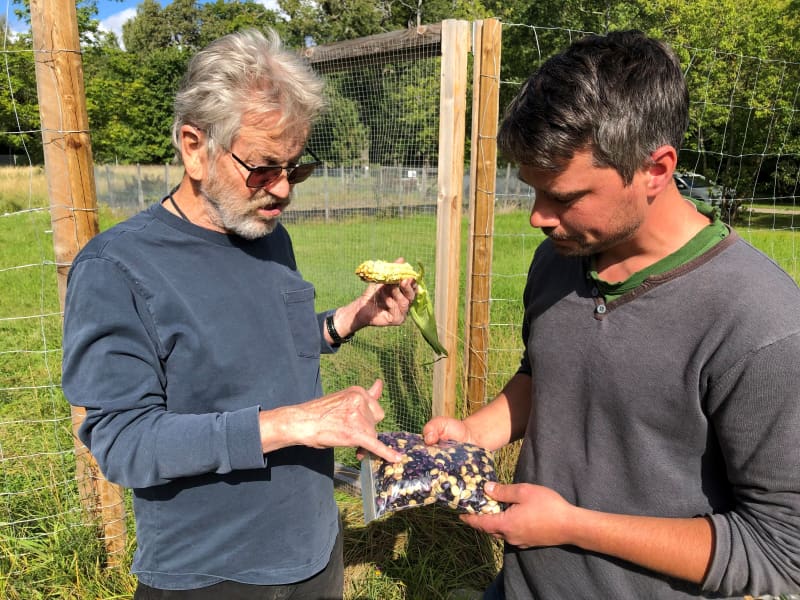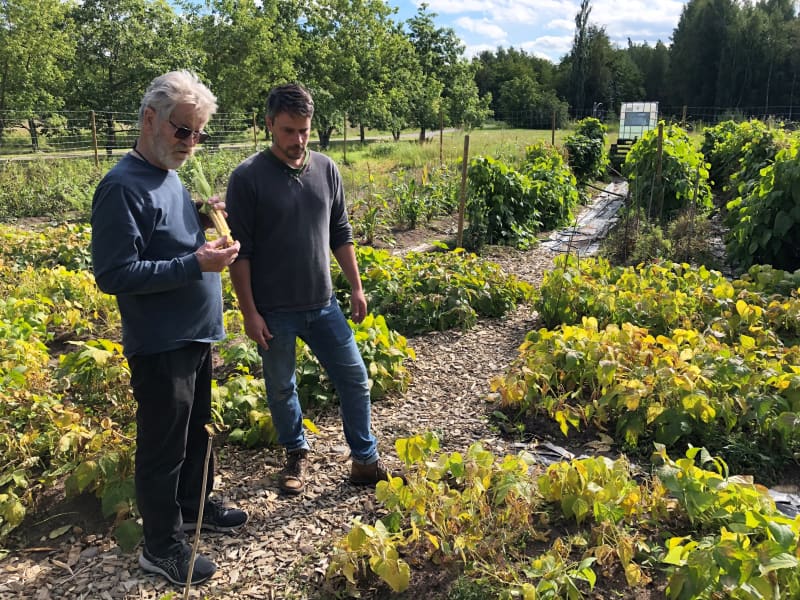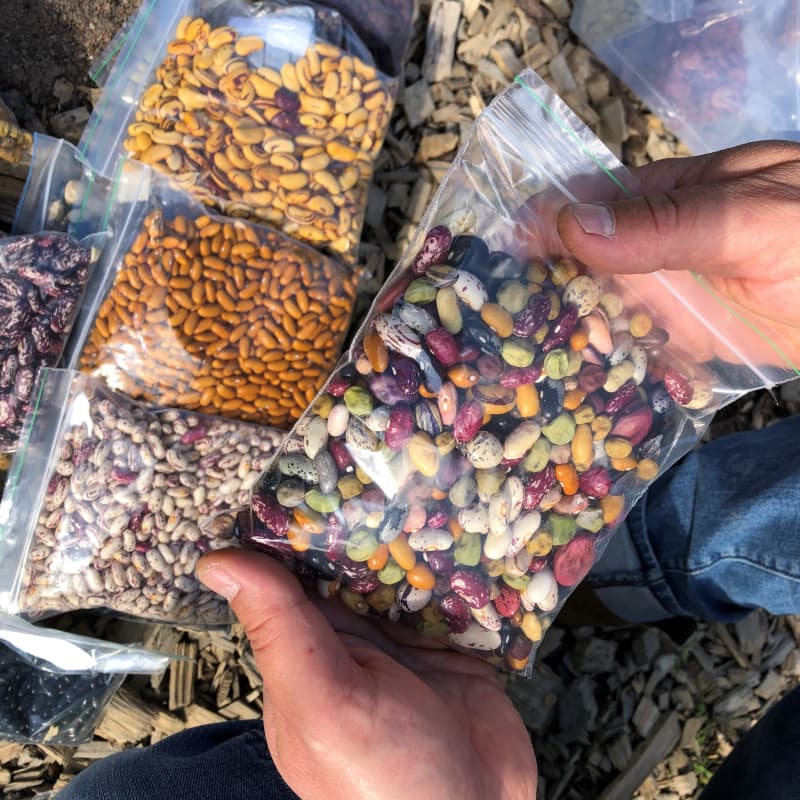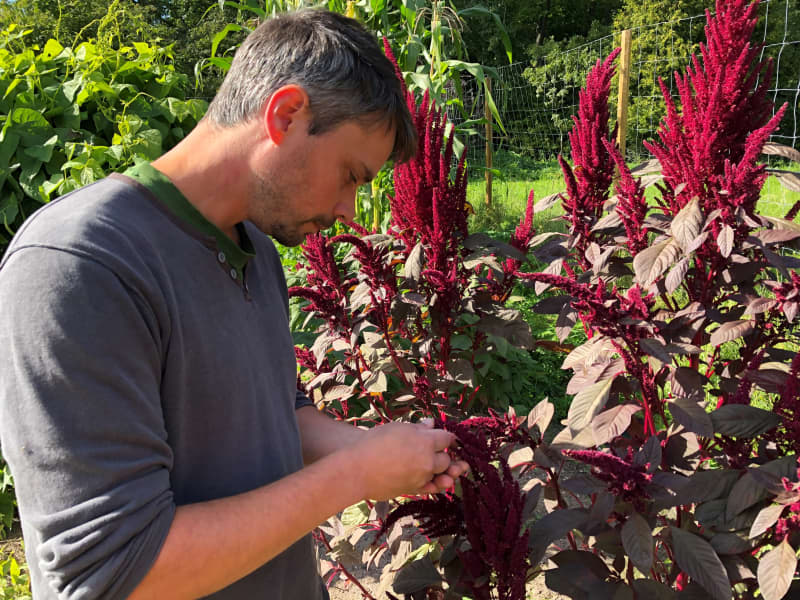The researcher has cultivated around 200 heirloom plants throughout the summer in an experimental plantation in Turku. The harvest has been promising, and the new varieties could bring diversity to both fields and plates.
Promising results have been obtained on the climate resilience of traditional legumes in Turku. Soya beans, broad beans and grey peas would make a tasty and colourful addition to Finnish tables.
The small part that ends up as human food is usually processed into some form. Traditional varieties are both beautiful and delicious, and could be enjoyed without processing.
The varieties that Weijola has studied are those that can be directly adopted by the farmer.
– Some of the bean varieties gave a good yield, even more than half a kilo per square meter. This is more than what can usually be produced on commercial farms in Sweden. They have been a festive food in the past in the Nordic countries, but their cultivation has not reached Finland.
Most of the experimental cultivation plant varieties have fallen out of use due to the mechanization of agriculture, but seeds are available from the Nordic gene bank.
Preliminary results are promising
The traditional varieties have thrived in the experimental cultivation in the botanical garden of the University of Turku, protected by a deer fence.
Researcher Valter Weijola is satisfied. In total, about 200 varieties are included in the study.
– In my research, there were 80 varieties of soup beans. About 10 of them matured well. The lentils grew well, and some of the chickpeas showed promising results.
The corns turned out handsome, although the whole crop did not have time to ripen.
– This grain corn I grew is used when ripe for porridge, flour or polenta. It is different from the sweet corn known as a vegetable, says Weijola.

The goal is to find the best cultivars in terms of cultivation characteristics and to continue their trial cultivation for a few years, in order to better be able to say how reliable this summer’s results were.
– The goal is also to show the visitors of the Ruissalo Botanical Garden and the general public that it is possible to grow good-tasting and beautiful legumes in our country, and not just a few varieties used for pea soup and fodder.
Large monocultures cause species loss and are vulnerable to extreme weather events
Valter Weijola works at the Biodiversity Unit of the University of Turku and he specializes in the reptiles of the Pacific islands.
The experimental farm is actually a side project for him, which was born from a long-term hobby of farming and the will to do something concrete to improve the sustainability of food production.
Research work is needed, because climate change and extreme weather events have a significant impact on food production.
– Modern agriculture impoverishes the soil, and is one of the biggest factors influencing climate change and species extinction. There are mostly a few varieties and large-scale use of artificial fertilizers and chemicals. This makes farming vulnerable when extreme weather events become more common and the world political situation is unstable.
He reminds that it would be useful to find new plants that do not require as much cultivation input as modern varieties and that can survive in warmer conditions and varying amounts of rain.
Valter Weyola’s goal is to find unprocessed legume varieties that are palatable to people and that can be cultivated in our country’s climate.
– Gray peas have been cultivated in Pohjola for at least 1,000 years. Despite their name, they are often variegatedly beautiful. Because of their tall growth habit, they disappeared when agriculture became mechanized. In Sweden, for example, they have started to be produced again commercially in joint cultivation with, for example, oats and rye wheat. The strong carded grain helps keep the peas upright, aiding threshing. Strong and tall growth effectively competes against weeds.
Keittopa is a garden bean, the seeds of which are allowed to ripen to the end. It is cultivated commercially on the northernmost island of Öland in southern Sweden.
– We will find out whether some of the fast-maturing varieties will also produce a crop in Finland. At least on the basis of this first summer, some Norwegian, Swedish and Estonian country varieties have time to catch fire in southern Finland, says Weijola.
A combination of gray pea, broad bean and broad bean could better protect crops as extreme weather events become more common, as all these species have slightly different water and temperature requirements.
Traditional varieties are generally more durable and less demanding in terms of fertilization and water supply than modern varieties. They compete better against weeds.
– Some of the traditional varieties can be challenging to harvest mechanically, and they can also be susceptible to some modern plant diseases. However, they could be crossed with new resistant varieties to produce new good combinations, reflects Weijola.

Experienced commercial farmer thanks researchers
Arno Kasvi has encouraged Finns to use vegetables in a versatile way. He was excited when he noticed the experimental farm during his walk.
– It’s only been twenty years since we got zucchini. Now it’s quite common. Spaghetti squash is cultivated in Finland, and nobody knew about them 30 years ago.
The plant reminds us that nowadays Finns are helped by, among other things, gauzes and sprinklers.
– With the help of researchers, we get important information. Need to know if they are short day plants or long day plants.
Garden consultant Kasvi was satisfied with the corridors of the experimental plantation. Weeds had been cut off with cardboard and no pesticides had been used.

Finland has a large amount of useful crop and food research
At the University of Turku, the topic is also studied in the Biodiversity and sustainability thematic entity, and in the BIODIFUL consortium funded by the Strategic Research Council. One of the main targets is the food system.
– Among other things, we are thinking about a \”biodiversity menu\” that is good for nature and people. The consortium includes four universities or research institutes, and more than 40 researchers, as well as many companies operating in the field, says Sääksjärvi.
Food research is also carried out, for example, at the University of Turku’s functional food development center and the Department of Biotechnology.
The Biodiversity Unit of the University of Turku also studies, for example, the effects of pesticides on natural ecosystems.
Professor Ilari Sääksjärvi believes that security of supply is one of the important entities that will definitely be invested in in the future.
– I think that the university world is currently very involved in the research of the sustainability breakthrough. The change in the food system is an integral part of this broader change. It is particularly interesting that different universities and research institutes also play together in an effort to find solutions, for example to stop the loss of nature, Sääksjärvi thinks.



